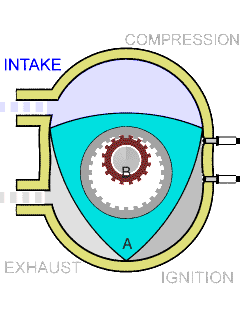
Monday, July 20, 2009
Wankel Engine

Monday, July 13, 2009
Laser Chess

Tuesday, July 7, 2009
Kunstformen der Natur
 |  |  |  |
Conway's Game of Life

Conway's Game of Life is an example of a simple cell automaton program. Imagine a piece of graph paper in which the squares are randomly either filled or empty. That graph paper represents the "organism" at zero generations. For each square (filled or empty), there are rules that govern whether it will be "alive" (filled), or "dead" (empty), in the next generation (represented by a second sheet of graph paper). Here are the rules:
"The universe of the Game of Life is an infinite two-dimensional orthogonal grid of square cells, each of which is in one of two possible states, live or dead. Every cell interacts with its eight neighbours, which are the cells that are directly horizontally, vertically, or diagonally adjacent. At each step in time, the following transitions occur:
- Any live cell with fewer than two live neighbours dies, as if caused by underpopulation.
- Any live cell with more than three live neighbours dies, as if by overcrowding.
- Any live cell with two or three live neighbours lives on to the next generation.
- Any dead cell with exactly three live neighbours becomes a live cell.
The initial pattern constitutes the 'seed' of the system. The first generation is created by applying the above rules simultaneously to every cell in the seed — births and deaths happen simultaneously, and the discrete moment at which this happens is sometimes called a tick. (In other words, each generation is a pure function of the one before.) The rules continue to be applied repeatedly to create further generations."